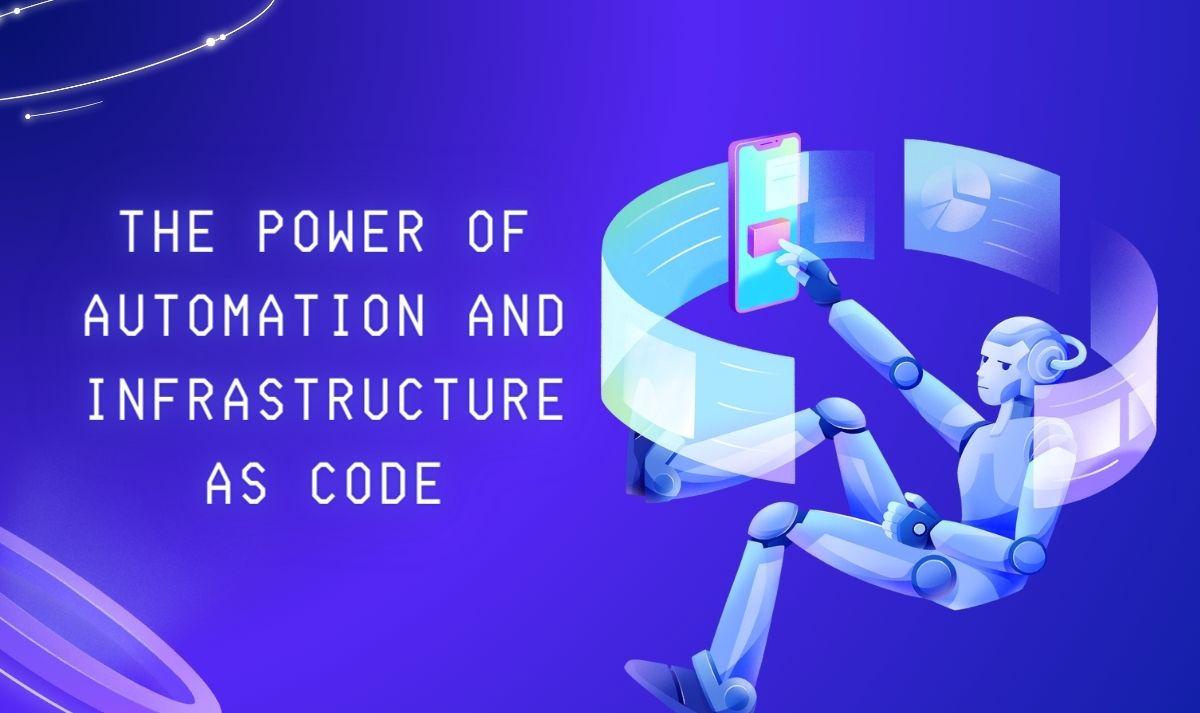
In the fast-paced world of technology, the demand for efficiency, scalability, and reliability has never been higher. Automation and Infrastructure as Code (IaC) have emerged as transformative forces, reshaping the way organizations manage and deploy their IT infrastructure. This article delves into the intricacies of automation and IaC, exploring their impact on IT operations, development cycles, and overall business agility.
Understanding Automation
1. The Evolution of Automation in IT
Automation in IT has evolved from simple script-based tasks to sophisticated systems that can handle complex processes. It aims to streamline repetitive tasks, reduce human errors, and improve overall system efficiency. The journey from manual configurations to automated workflows has paved the way for a more agile and responsive IT environment.
2. Benefits of Automation
-
Efficiency: Automated processes significantly reduce the time required to complete tasks, allowing IT teams to focus on more strategic initiatives.
-
Consistency: Automation ensures that tasks are performed consistently, eliminating the variations introduced by human error.
-
Scalability: As organizations grow, the ability to scale operations becomes crucial. Automation provides a seamless way to scale IT processes without a linear increase in resources.
-
Cost Savings: By reducing manual intervention, organizations can optimize resource allocation and achieve cost savings.
3. Use Cases of Automation in IT
-
Configuration Management: Automation tools like Ansible, Puppet, and Chef are widely used for configuring and maintaining server infrastructure.
-
Continuous Integration/Continuous Deployment (CI/CD): Automated pipelines enable developers to push code changes seamlessly from development to production environments.
-
Monitoring and Alerting: Automation can be employed to monitor system performance and automatically trigger alerts or remediation actions in case of anomalies.
Infrastructure as Code (IaC)
1. Defining Infrastructure as Code
Infrastructure as Code is a paradigm that treats infrastructure configurations as code, allowing organizations to manage and provision infrastructure using the same principles that govern application code. This shift enables the use of version control, collaboration, and automation for infrastructure management.
2. Key Concepts of IaC
-
Declarative vs. Imperative: Declarative IaC specifies the desired state of the infrastructure, while imperative IaC defines the steps to reach that state. Tools like Terraform and AWS CloudFormation follow a declarative approach.
-
Idempotency: IaC should be idempotent, meaning the same configuration can be applied repeatedly without causing issues. This ensures consistency and reliability.
-
Version Control: IaC benefits from version control systems like Git, allowing teams to track changes, collaborate, and roll back to previous configurations if needed.
3. IaC Tools and Technologies
-
Terraform: A widely adopted open-source tool that supports multiple cloud providers, allowing users to define and provision infrastructure in a declarative manner.
-
AWS CloudFormation: Amazon's IaC service designed for provisioning and managing AWS resources.
-
Ansible: Although primarily known as a configuration management tool, Ansible can be used for IaC to automate infrastructure tasks.
The Symbiosis of Automation and IaC
1. Automating IaC Workflows
Automation and IaC are synergistic, creating a powerful combination for modern IT environments. Automated workflows can streamline the deployment, configuration, and maintenance of infrastructure defined as code.
2. Benefits of Integrating Automation with IaC
-
Speed and Agility: The joint use of automation and IaC accelerates the development and deployment cycles, fostering a more agile and responsive IT environment.
-
Consistency Across Environments: Automated IaC workflows ensure that infrastructure configurations are consistent across different environments, reducing the risk of errors and improving reliability.
-
Collaboration: Teams can collaborate more effectively by using version control systems to manage changes in both code and infrastructure configurations.
Challenges and Best Practices
1. Challenges in Automation and IaC Implementation
-
Learning Curve: Adopting automation and IaC may require teams to acquire new skills and adapt to a different way of managing infrastructure.
-
Security Concerns: The automation of processes and the use of IaC introduce security considerations that need to be addressed, such as secure credential management and compliance.
-
Legacy Systems Integration: Integrating automation and IaC with legacy systems can be challenging, requiring thoughtful planning and execution.
2. Best Practices for Successful Implementation
-
Start Small: Begin with a pilot project or a small set of infrastructure components to gain familiarity and build confidence.
-
Collaboration and Training: Encourage collaboration between development and operations teams, and invest in training to ensure that teams are equipped with the necessary skills.
-
Security by Design: Incorporate security practices from the outset, including regular audits, secure credential management, and adherence to compliance standards.
-
Documentation: Maintain comprehensive documentation for both code and infrastructure configurations to facilitate troubleshooting and future updates.
Case Studies
1. Netflix: Scaling with Chaos Monkey and Spinnaker
Netflix, a pioneer in DevOps and automation, uses Chaos Monkey to randomly terminate instances in production to test system resilience. Spinnaker, an open-source multi-cloud continuous delivery platform, automates the deployment process, allowing Netflix to scale its infrastructure seamlessly.
2. HashiCorp: Terraform for Multi-Cloud Provisioning
HashiCorp's Terraform is a go-to choice for organizations embracing multi-cloud strategies. Terraform enables users to define infrastructure for various cloud providers in a consistent manner, providing flexibility and avoiding vendor lock-in.
Future Trends and Conclusion
1. The Future of Automation and IaC
-
AI and Machine Learning Integration: The integration of AI and machine learning in automation and IaC will enable more intelligent decision-making and predictive capabilities.
-
Serverless Computing: The rise of serverless computing will further shape the landscape of automation and IaC, as organizations shift towards event-driven architectures.
-
Edge Computing: Automation and IaC will play a crucial role in managing and provisioning infrastructure in edge computing environments, ensuring efficient and reliable operations.
2. Conclusion
Automation and Infrastructure as Code represent a paradigm shift in IT operations and development. The combination of these powerful technologies empowers organizations to achieve unprecedented levels of efficiency, scalability, and reliability. As we navigate the ever-evolving landscape of technology, the synergy between automation and IaC will continue to drive innovation, enabling organizations to stay competitive in the digital era.







